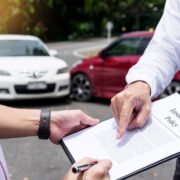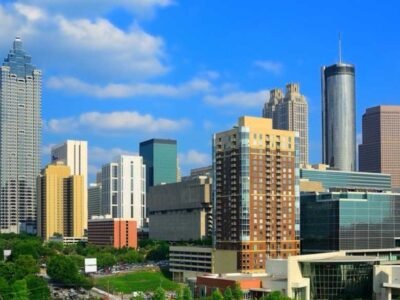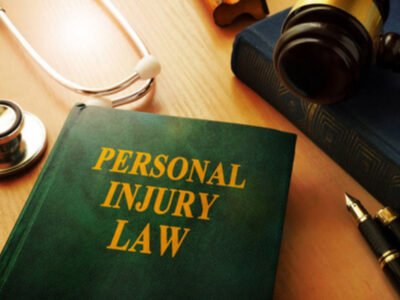Maintaining safe and inviting premises is crucial for any business type, property owner, or landlord in Pearland, Texas. Property negligence can lead to accidents, injuries, and, ultimately, premises liability claims. For instance, slips and falls are the primary reason for most accidental injuries in the United States, accounting for an estimated 20.8 percent of all ER visits. In this article, we will explore the significance of property maintenance in Pearland in preventing these claims.
Understanding Premises Liability
Premises liability refers to the legal responsibility that property owners and occupants in Pearland have for injuries or accidents that occur on their premises due to negligent upkeep. Premises liability from landlord responsibility in the city can include slips and falls, trips, dog bites, and inadequate security, leading to assault or theft, among other potential hazards.
The Importance of Regular Maintenance
1.Ensuring Structural Integrity:
Regular inspections and repair work are essential to maintaining the integrity of a property’s structure. This includes checking for cracked sidewalks or pavement, loose handrails on staircases or balconies, and unstable flooring or ceilings – anything that could potentially cause harm if left unaddressed.
2.Mitigating Slip and Fall Hazards:
Slip and fall incidents are some of the most common premises liability claims faced by businesses and property owners today. Conducting routine inspections ensures that walkways are clear of debris and spills are promptly cleaned up with warning signs placed when necessary.
3.Adequate Lighting:
Proper illumination plays a significant role in reducing accidents on properties like parking lots, pathways, and staircases/steps, ensuring individuals can navigate safely even during nighttime hours.
4.Landscaping Maintenance:
Neglected landscape areas like overgrown trees and shrubs can obstruct walkways or create other trip hazards if not properly maintained, which can increase the chances of accidents occurring.
Hiring Professionals: The Right Approach
Many complex issues require professional attention – from electrical or plumbing systems to HVAC units. Contacting specialized technicians who possess the necessary knowledge not only helps ensure safety but also complies with legal requirements/practices, enhancing overall efficiency and reducing potential risks even more.
An Ounce of Prevention: Negligence and Liability
Diminished property maintenance signals negligence. Identifying areas where potential risks could arise and addressing them promptly helps you reduce the probability of accidents on your premises, minimizing liability burdens.
Limiting Accessibility: IDs, Aisles & Accessibility
Emergencies may arise, making proper egress critical to preserving life without causing further harm. Any physical objects or obstacles blocking pathways can impede escape in such situations, putting lives at risk! Maintaining clear, unobstructed access is essential for employees, customers, and inhabitants.
Open Lines of Communication: Reporting Maintenance Issues
Encouraging open lines of communication regarding maintenance issues allows individuals to report concerns quickly so that they are addressed before any escalations. Utilizing online portals or dedicated channels for reporting problems will make the process more accessible and seamless.
Tips for Effective Property Maintenance
Managing and maintaining a property is an ongoing effort that requires dedication and attention to detail. Here are some tips to ensure your property maintenance practices are effective in preventing premises liability claims:
1.Develop a Maintenance Checklist:
Create a comprehensive checklist outlining all the necessary maintenance tasks for your property. This can include regular inspections, repairs, cleaning routines, and landscaping maintenance. By having a structured checklist, you can ensure that no vital maintenance aspects are overlooked.
2.Regular Inspections:
Regular inspections are a critical component of property maintenance. Designate specific intervals to thoroughly inspect your premises for any potential hazards or issues that may require immediate attention. Documenting these inspections will help create a transparent record of your diligence in maintaining the safety of your property.
3.Proactive Repairs:
Proactively addressing repair needs is crucial in preventing accidents and injuries. Regularly assess the condition of all structural components, including flooring, stairs, handrails, doors, and windows. Prioritize addressing any signs of wear and tear or damage promptly to maintain a safe environment.
4.Employee Training Program:
Establish an employee training program regarding premises safety and best practices and how to report maintenance issues or potential hazards immediately. Teach employees how to identify common risks such as spillages and operators/service facility errors, and then associate checkpoint exercises with the concerned authority. Maintain routine records, making this program mandatory for all employees/business concerns.
5.Communication with Tenants/Occupants:
If you’re managing rental properties with multiple tenants or occupiers, it’s crucial to establish effective lines of communication. Responsive communication encourages tenants/attendees to report any issues or repairs needed promptly. Relaying updates and sharing any necessary information regarding inspections and maintenance work being undertaken helps keep people aware, ensuring accountability-partnership and improving the goodwill of tenants through voluntary follow-ups(fosters relationship), thereby affecting outcomes positively!
6.Seasonal Maintenance Considerations:
Different seasons present different maintenance needs. Hence, considering tasks like snow removal, gutter cleaning, HVAC checks (regularly changing filters), protection (flooding or winterizing pipes/plumbing), and specific landscape maintenance corresponding to different weather conditions ensures that your property is prepared for seasonal challenges/changes, reducing potential risks associated with extreme weather conditions.
7.Thorough Documentation:
Whenever any repairs or maintenance work are performed on the property, remember to maintain detailed documentation. Keep records of work orders, invoices/receipts, and any other relevant information available. These records can serve as vital evidence and help demonstrate your commitment to maintaining safe premises in case of any liability claims.
Conclusion
Property maintenance is not just about keeping your buildings aesthetically pleasing; it’s primarily about promoting safety and reducing the risk of premises liability claims. By following these tips and implementing effective property maintenance practices, you ensure that your property remains in optimal condition while safeguarding the well-being of those who visit or occupy it. Regular inspections, proactive repairs, collaborative/supportive communication with tenants, prompt employee updates along with a clear checklist, and employing specialists help multiply efficiency, enhancing collective engagement and ensuring adherence. This approach helps establish accountability while diligently addressing upkeep concerns, reducing potential harm, and minimizing the possibility of premises liability claims.














Comments